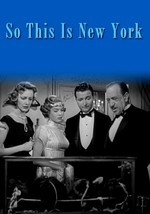Background: This is a giallo movie. "What's giallo" you ask? Broadly, it's less a genre than a style of movie. After the spaghetti western crazy of the 60s, Italian filmmakers turned their fancies to other genre pictures. Giallo literally translates to "yellow," referring to the covers of pulp novels in Italy at the time. Giallo movies are noted for the pulp novel tendencies. They use atmosphere to set their moods, lighting and colors are very important. Typically giallo movies are thrillers, but also with modern slasher-movie tendencies. Dario Argento and Lucio Fulci are famous for their giallo work.
This movie specifically though has some interest about it too. It stars George Lazenby, one time James Bond. And I mean one time, he was only in On Her Majesty's Secret Service, the gap filler between the great Sean Connery films and the unwatchable Roger Moore films. Another thing giallo films are known for is their score, usually huge and orchestral, and this one comes from the legendary Ennio Morricone. He, of course, is known for his work all over italian cinema, especially the riff from The Good, The Bad and The Ugly. I embedded the trailer because it's got most of the main musical themes and they're really great. Aldo Lado directs. He's done a bunch of stuff, none of which has really penetrated to the States. I just find it neat that his first and last names are anagrams.
Plot: Who Saw Her Die? is set up like a noir film. It's got loads of shifty characters, constant clues and misdirection, paranoia, everything you want from noir. As such, I'm only gonna talk in more general terms than usual or I'd be writing this for several days. The movie opens in France where we see a girl, probably around 8 years old, playing in the snow. Her mom leaves her for a bit and a veiled man dressed all in black sneaks up on her, murders her and buries her in the snow.
Cut to Venice, a year later. Franco (Lazenby) is getting a visit from his daughter. She usually lives in London with her mother, who's still in London, in fact. He's an artist who's been getting great reviews for his work. All the guys act really really creepy towards her, seemingly in a competition to be the guy in the phrase "That guy's totally the killer". The real veiled guy shows up one day when she's playing with playing with some other kids. Roberta is practically begging to be murdered at this point. All the other kids leave, she's approached by a strange man in all black and a veil, she stand there like an idiot. Oh well. She shows up face down in the canals of Venice.
Franco isn't taking this sitting down. His friend quickly connects the dots to the other murder in France and he sets off investigating. His search takes him to interview the family of the other little girl, a fencing enthusiast, a pederast lawyer and more. The story keeps unfolding and unfolding, sometimes way too fast and for no reason. It comes together a bit at the end though. Stick around for the final gag in a film choch full of the murder of children!
Why Was It Forgotten? Giallo never really caught on in the main stream the way spaghetti westerns did. Genre films in general don't usually get much penetration, especially not in those days. They've always hit big when they hit, but they weren't always the successes that they are now. As such, giallo remains purely for the film nerds. They're a very selective bunch though, and they tend to celebrate filmmakers as much as they do the individual films they make. Truth is, Aldo Lado may have made a really good film here, but he hash't made a whole lot of other good films, or really any that were even released in the U.S. He'd never hold a candle to Argento or Fulci.
And frankly, this movie falls apart towards the end. It was always sort of hard to follow because of all the Italian names. It got hard matching up faces with such unfamiliar names with a cast of characters as large as this one. About an hour in though, the plot starts taking needless turns. It sticks with its great style to the end though.
What Went Right? Like I said, the style. It looks great, the atmosphere is great, the soundtrack is fantastic. There's one song that plays every time the murderer shows up that makes you wish for more murders. Even though, you know, sometimes kids get murdered, but still. Sometimes the music will start and the murderer will just be sneaking around, sometimes it'll take you by surprise. No matter how off the rails the plot went, I was always excited to hear that music.
I feel like I've been ragging on the plot too much though. For the first hour, it completely reeled me in. The viewer is left just as in the dark as to who the killer is as Franco, in classic noir style. It's only when he's sneaking around, talking to a bunch of different people for a bunch of different reasons that it gets confusing. It starts to pick back up in the endgame though, when he gets closer and closer to the killer. You start to think "It's gotta be that guy, who else could-- wait he's murdered. Who else?"
Verdict: Style for days, substance for about 65 minutes.
Score: 85%







